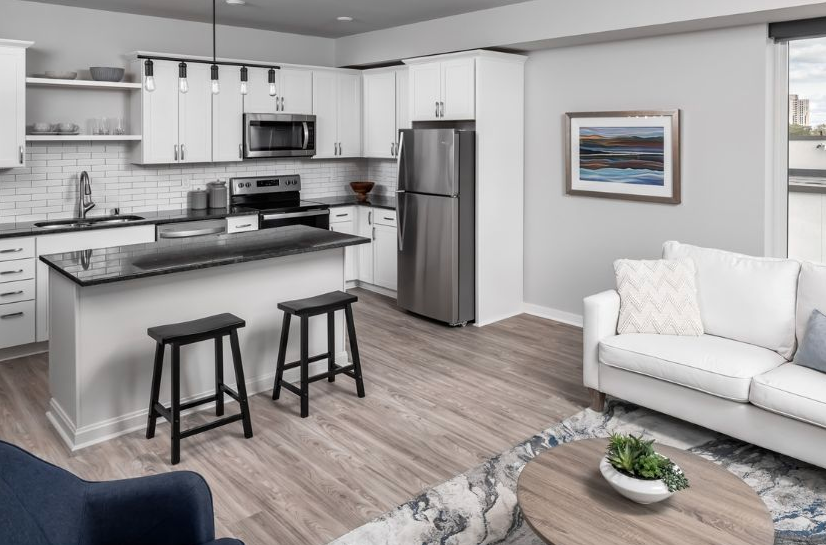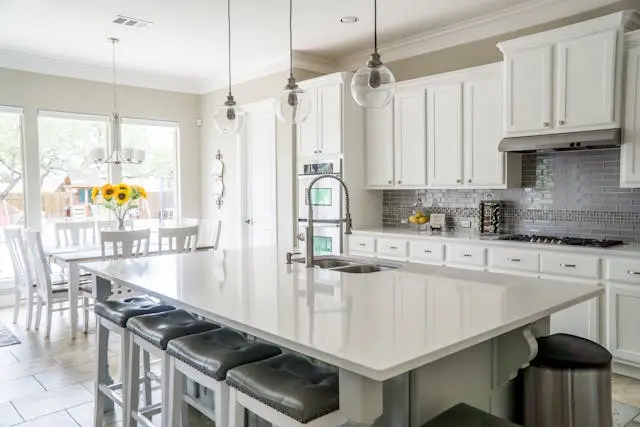Find Your Perfect Home: Top Houses for Sale Across the U.S.
Discover your dream home with expert tips on budgeting, choosing the right location, and exploring various home types in the U.S. From single-family houses to condos and new constructions, this guide helps you navigate the home-buying process with ease. Learn about financing options and make the right choice for you and your family.
The dream of owning a home is one of the most exciting milestones in life. Whether you're a first-time buyer or searching for your forever home, finding the perfect house in the U.S. can feel like a daunting task. However, with the right approach and understanding of your needs, the search can be much easier and more rewarding. Here’s a guide to help you navigate the process of finding the ideal house for you and your family.
Understanding Your Needs
Before you even start browsing listings, it’s important to define what you're looking for in a home. Consider the following factors:
- Budget: Determine how much you're willing to spend. This will give you a clear idea of the types of houses you can afford in different areas of the U.S. Don’t forget to account for additional costs like property taxes, home insurance, and maintenance.
- Location: The location of your new home is crucial. Think about proximity to your work, schools, grocery stores, healthcare facilities, and recreational areas. Do you prefer a bustling city, a quiet suburban neighborhood, or a rural retreat?
- Size and Layout: How much space do you need? Consider the number of bedrooms, bathrooms, and whether you want extra features like a home office, basement, or large backyard.
- Lifestyle and Amenities: Do you need specific amenities like a swimming pool, gym, or a garage? Understanding what’s essential to your lifestyle will help narrow down your options.
Exploring Different Types of Houses
The U.S. housing market offers a wide variety of home types to suit different preferences and budgets. Some of the most common options include:
- Single-Family Homes: Ideal for those who want privacy and space. These homes are typically standalone properties with yards and offer more flexibility in terms of personalization and expansion.
- Townhomes: A middle ground between single-family homes and condos. Townhomes are attached houses that often feature multiple levels and shared walls with neighbors. They may come with communal amenities like parks or security services.
- Condos: If you’re looking for low maintenance and a simpler lifestyle, a condominium might be the right choice. Condos often come with shared amenities such as fitness centers, pools, and common areas. However, you may have less control over the building’s exterior.
- Multi-Family Homes: These properties, which include duplexes or triplexes, offer the opportunity to live in one unit while renting out the others for extra income. This is a popular option for investors or those looking to offset their mortgage costs.
- New Construction: Brand-new homes come with modern features and energy-efficient systems. They're often customizable to your needs and preferences but may come at a higher price tag.
- Fixer-Uppers: If you don’t mind putting in a bit of work, buying a fixer-upper can be a great way to secure a home at a lower price point. However, you’ll need to factor in renovation costs and time.
Researching the Market
Once you've identified what you're looking for, it's time to dive into the housing market. Start by browsing online real estate listings on websites like Zillow, Realtor.com, and Redfin. These platforms allow you to filter properties by price, location, and other features to find homes that meet your criteria.
You may also want to consider hiring a real estate agent, especially if you're a first-time buyer or unfamiliar with the area. A skilled agent can help you navigate the market, negotiate prices, and handle paperwork.
Consider Financing Options
Understanding your financing options is essential when buying a home. Here are some common methods to consider:
- Conventional Mortgages: This is the most common type of home loan, typically requiring a down payment of at least 20%. It comes with fixed or adjustable rates and offers flexibility in terms of loan term lengths.
- FHA Loans: A government-backed loan designed for first-time buyers, these loans have lower down payment requirements and can be easier to qualify for compared to conventional mortgages.
- VA Loans: Available to veterans and active-duty military members, VA loans offer competitive interest rates and often don’t require a down payment.
- USDA Loans: Aimed at rural homebuyers, USDA loans are government-backed loans that often require no down payment and offer low-interest rates.
- Adjustable-Rate Mortgages (ARMs): With ARMs, the interest rate can change after an initial fixed period. These are a good option for buyers who plan to sell or refinance before the rate changes.
Making the Offer
Once you’ve found your dream home, it’s time to make an offer. Your real estate agent will help you craft an offer that aligns with the local market conditions. In hot markets, you may need to offer above the asking price or include contingencies such as a quick closing.
If the seller accepts your offer, you’ll move into the inspection and closing phase, where you’ll finalize financing, undergo a home inspection, and sign the necessary paperwork to officially close on your new home.
The Final Steps
After your offer is accepted, the final steps in the home-buying process include:
- Home Inspection: Hire a professional inspector to assess the home’s condition and identify potential issues. If the inspection uncovers significant problems, you may be able to negotiate repairs or a price reduction with the seller.
- Appraisal: Lenders typically require an appraisal to ensure the home’s value aligns with the loan amount.
- Closing: Once everything is in order, you’ll attend the closing meeting where you’ll sign the necessary documents, pay any closing costs, and officially take ownership of the property.
Conclusion
Finding the perfect home is a journey that requires careful planning, research, and patience. Whether you're purchasing your first house or your forever home, understanding your needs, exploring the types of homes available, and researching financing options will ensure a smooth process. With the right approach, you’ll be well on your way to owning the home of your dreams!
Explore

Discover the Ultimate Swimspa Experience: Find the Best Swim Spas for Sale Near You

Unwrap the Savings: Exclusive Christmas Sale – Up to 50% Off on Holiday Favorites!
Explore Dubai Villas for Sale: Exclusive Properties for Luxury Living

Best Cruise Lines for Winter Getaways: Discover Your Perfect Escape

Finding Your Perfect Apartment: Tips for Stress-Free Rentals

Top 10 Home Improvement Projects for 2024: Boost Your Home's Value & Comfort

Explore the Best Crossover SUVs of 2024: Perfect for Every Lifestyle
Industrial Lockers: The Perfect Storage Solution for U.S. Workplaces
